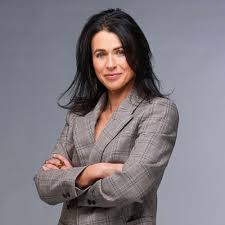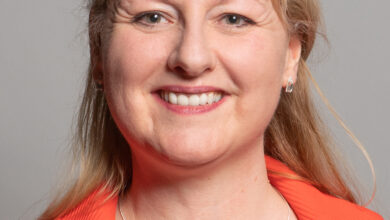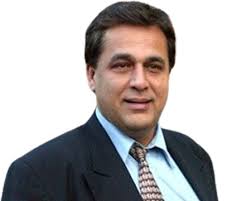Emily Sheffield: The Voice Behind Modern British Journalism

Introduction: The Rise of a Modern Media Maverick
Emily Sheffield stands as one of Britain’s most fascinating figures in contemporary journalism. A woman of ambition, intellect, and resilience, she has traversed an extraordinary path—from the glossy pages of British Vogue to the editor’s desk of the Evening Standard. Known for her sharp editorial vision and her fearless approach to storytelling, Emily Sheffield embodies the intersection of tradition and transformation in British media.
Her journey is not only defined by professional excellence but also by her ability to adapt in an ever-evolving media landscape. Born into an aristocratic family with strong political connections, Sheffield has made her own mark through years of consistent dedication to journalism, storytelling, and innovation.
Early Life and Education
A Heritage of Influence
Emily Julia Sheffield was born on 11 April 1973 in London, England, into a family with notable heritage. Her father, Sir Reginald Sheffield, 8th Baronet, and her mother, Annabel Jones, were well-known figures in British society. Her sister, Samantha Cameron, is the wife of former UK Prime Minister David Cameron. Despite her aristocratic background, Emily built her reputation on talent and work ethic rather than family ties.
Educational Foundations
Sheffield’s educational journey began at Marlborough College, one of Britain’s prestigious independent schools. She later attended the University of East Anglia, where she read English. Her time at university nurtured her love for writing and refined her analytical thinking—skills that became the cornerstone of her later career in journalism and media leadership.
A Career Shaped by Words and Vision
Early Beginnings in Journalism
Emily Sheffield’s entry into journalism was marked by her early work as a features assistant and columnist for The Guardian. Her sharp wit, observational writing style, and balanced perspective quickly made her a voice to watch in British journalism. From covering lifestyle trends to social commentary, she developed a distinctive tone—intelligent yet accessible, sophisticated yet relatable.
The Vogue Years: Crafting an Editorial Legacy
Her major career breakthrough came when she joined British Vogue, where she served as deputy editor for twelve years. Working closely with legendary editor Alexandra Shulman, Sheffield played a key role in shaping the magazine’s editorial direction during a transformative era for fashion journalism.
Under her leadership, Vogue expanded its narrative beyond haute couture, delving into cultural commentary, gender issues, and social movements. Sheffield championed a new kind of fashion writing—one that reflected the realities of modern women. Her work helped bridge the gap between glamour and authenticity, style and substance.
Transition to Digital Media
As print media faced the growing influence of digital platforms, Emily Sheffield was among those who recognised the need for evolution. She launched ThisMuchIKnow, a “positive news” app designed to highlight uplifting and meaningful stories. Although the project eventually closed, it showcased her forward-thinking mindset and her commitment to reimagining how news could inspire rather than overwhelm audiences.
The Evening Standard Era
Taking the Helm
In June 2020, Emily Sheffield was appointed editor of the Evening Standard, succeeding former Chancellor George Osborne. Taking charge during a tumultuous time marked by the COVID-19 pandemic, she faced one of the toughest editorial challenges in recent media history.
Her tenure was characterised by efforts to rejuvenate the paper’s voice, diversify its coverage, and strengthen its digital presence. Sheffield sought to balance London’s cultural vibrancy with the realities of post-pandemic life, positioning the Evening Standard as a hub for both inspiration and reflection.
Navigating Challenges
Despite her ambitious vision, Sheffield’s time at the helm lasted only until October 2021. The media industry’s financial pressures and internal shifts contributed to her departure. Yet, she remained graceful in transition, continuing as a columnist for the publication. Her post-editorial work reflects her enduring belief in the power of the press to engage and empower readers.
Beyond the Newsroom: A Multifaceted Communicator
Broadcasting and Commentary
Following her departure from the Evening Standard, Sheffield expanded her presence in broadcasting and public commentary. She has appeared across major UK media outlets, including TalkTV, offering her views on politics, culture, and current affairs. Her articulate and thoughtful commentary continues to reinforce her standing as one of Britain’s most respected media voices.
Consultancy and Creative Direction
Emily Sheffield’s expertise now extends into consultancy, particularly in strategic communications across the technology and consumer sectors. Her understanding of both legacy media and digital trends makes her an invaluable advisor for brands navigating the complexities of modern storytelling.
Her consultancy work reflects her belief that authenticity, innovation, and clarity are essential in connecting with today’s audiences. Whether guiding corporate narratives or mentoring emerging journalists, Sheffield’s influence resonates far beyond print.
Personal Life and Influences
Emily Sheffield married Tom Mullion in 2002, and the couple have two sons. Despite her family’s public prominence, she has largely maintained a private personal life, choosing to let her professional accomplishments speak for themselves.
However, she has not been entirely removed from public intrigue. In 2013, a light-hearted social media post accidentally revealed a behind-the-scenes glimpse of her brother-in-law, then-Prime Minister David Cameron. The post, which was meant for a private audience, became a minor viral story—showing that even seasoned journalists are not immune to the pitfalls of digital sharing.
Through it all, Sheffield has shown resilience and humility, traits that continue to endear her to readers and peers alike.
A Voice for Modern Britain
Championing Change
Throughout her career, Emily Sheffield has been a vocal advocate for change within journalism. She champions diversity, modernisation, and greater female representation in leadership roles across British media. Her career trajectory—from Vogue to The Guardian to The Evening Standard—demonstrates her ability to transcend boundaries and adapt to shifting landscapes.
Influence on Future Journalists
Aspiring writers and editors often look to Sheffield’s career as an example of integrity and evolution. She has shown that media professionals must not only master the craft of writing but also understand the cultural pulse of society. Her journey illustrates the importance of curiosity, adaptability, and courage in the face of change.
Legacy and Ongoing Impact
Emily Sheffield’s legacy lies not only in her impressive editorial résumé but also in her enduring belief in the transformative power of journalism. She represents a generation of editors who refuse to let tradition stifle innovation. Her blend of classic journalistic values and forward-thinking ideas ensures that her influence will continue to shape the media for years to come.
Today, she continues to engage with issues of media integrity, cultural identity, and the role of truth in public life. Her voice remains clear, confident, and unapologetically British—a reflection of a journalist who has never been afraid to evolve.
Conclusion: The Power of Reinvention
Emily Sheffield’s story is one of reinvention, resilience, and relentless curiosity. From the polished pages of Vogue to the fast-paced newsroom of the Evening Standard, she has continuously proven her ability to thrive amid change. Her legacy is not just that of a journalist or editor, but of a visionary who believes in the enduring relevance of storytelling.
In an era where information is fleeting, Emily Sheffield stands as a reminder that great journalism is about more than headlines—it’s about insight, integrity, and the courage to shape the conversation.



